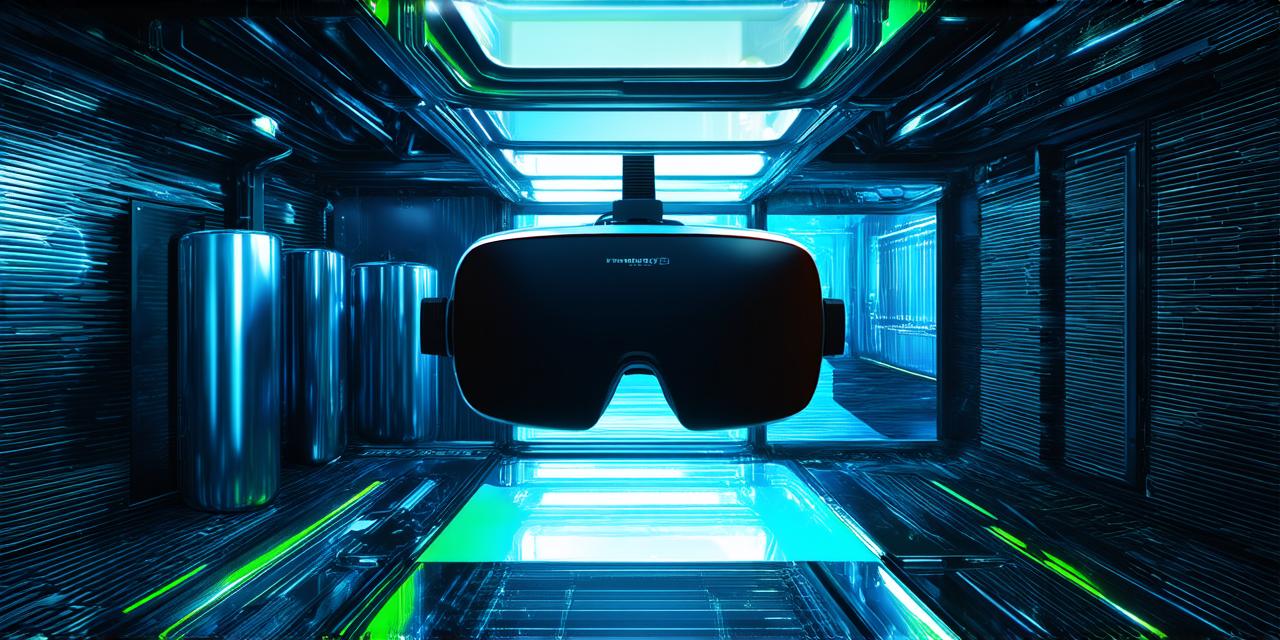Virtual reality (VR) is an immersive technology that allows users to experience a simulated 3D environment in real-time. It has the potential to revolutionize industries ranging from gaming and entertainment to healthcare and education.
What is Virtual Reality?
Virtual reality technology involves creating a simulated environment that can be experienced through a head-mounted display (HMD) or other sensory input devices such as hand controllers, gloves, and sensors. The goal of VR is to create a sense of presence in the virtual world, allowing users to feel as if they are physically present in the simulated environment.
Virtual reality technology has been around for decades, but it was not until the 1960s that it became practical and affordable. Since then, there have been significant advancements in the field, including improvements in graphics, processing power, and input devices. Today, virtual reality is widely used in various industries such as gaming, entertainment, healthcare, education, and more.
How does Virtual Reality work?
Virtual reality technology works by using computer-generated images and other data to simulate a 3D environment. The HMD or other sensory input devices track the movements of the user’s head and body, allowing the virtual world to adjust in real-time based on the user’s actions. This creates an immersive experience that can feel very realistic.
One key component of VR is stereoscopic display technology, which allows the HMD to display two slightly different images for each eye. This creates a sense of depth and perspective in the virtual world, making it more realistic and easier to navigate.
Another important aspect of VR is motion tracking. Motion tracking devices use sensors to track the user’s movements and adjust the virtual environment accordingly. This allows users to interact with objects in the virtual world, such as picking up a virtual object or moving through space.
Applications of Virtual Reality
Virtual reality technology has numerous applications across various industries. Some of the most common uses include:
- Gaming and entertainment: Virtual reality gaming has become increasingly popular, allowing users to immerse themselves in a 3D environment and interact with virtual objects in a way that was previously not possible.
- Healthcare: VR technology can be used for medical training, therapy, and rehabilitation. For example, doctors can use VR simulations to practice surgical procedures or physical therapists can use VR to help patients recover from injuries.
- Education: Virtual reality can be used to create immersive educational experiences that allow students to explore historical events or scientific concepts in a 3D environment.
- Design and architecture: Architects and designers can use VR technology to create virtual models of their designs, allowing clients to experience the final product before it is built.
- Training and simulation: Virtual reality can be used for training simulations in industries such as aviation, military, and emergency services. This allows trainees to practice skills in a safe and controlled environment.
- Tourism and travel: VR technology can be used to create virtual tours of popular tourist destinations, allowing people to experience these locations from the comfort of their own homes.
Case Studies and Personal Experiences
One example of virtual reality technology in action is the use of VR for medical training. The University of California, San Francisco (UCSF) uses VR simulations to train doctors and other healthcare professionals in surgical procedures. These simulations allow doctors to practice their skills in a safe and controlled environment, which can lead to better patient outcomes.
Another example is the use of VR for education. The University of Maryland uses VR technology to teach students about ancient Egypt. Students can explore a virtual version of the Great Pyramids, learn about hieroglyphics, and even interact with virtual representations of pharaohs.
Personally, I have experienced virtual reality technology firsthand and it is truly an immersive experience. I remember trying on an HMD for the first time and being transported into a virtual world. The graphics were so realistic, and the motion tracking made me feel as if I was actually in the virtual environment. It was a surreal experience that left me feeling both excited and a little disoriented.FAQs
1. What is the difference between VR and AR?
VR stands for virtual reality, while AR stands for augmented reality. VR technology creates a fully immersive 3D environment, while AR technology overlays digital information onto the real world.
2. How do I get started with VR development?
There are many resources available online for beginners to get started with VR development, including tutorials, guides, and sample code. Some popular programming languages used in VR development include C++, Unity, and Unreal Engine.
3. Is VR technology affordable?
The cost of VR technology can vary depending on the type of hardware and software you need. While there are more affordable options available, such as smartphone-based VR headsets, high-end VR systems can be quite expensive.
Conclusion
Virtual reality technology has come a long way since its inception, and it continues to evolve and improve. Whether you are a gaming enthusiast or a healthcare professional, virtual reality technology has the potential to change the way we experience and interact with the world around us. As VR technology continues to advance, we can expect to see even more exciting applications in various industries. So what does virtual reality mean? It means the future is here, and it’s time to explore new possibilities.
